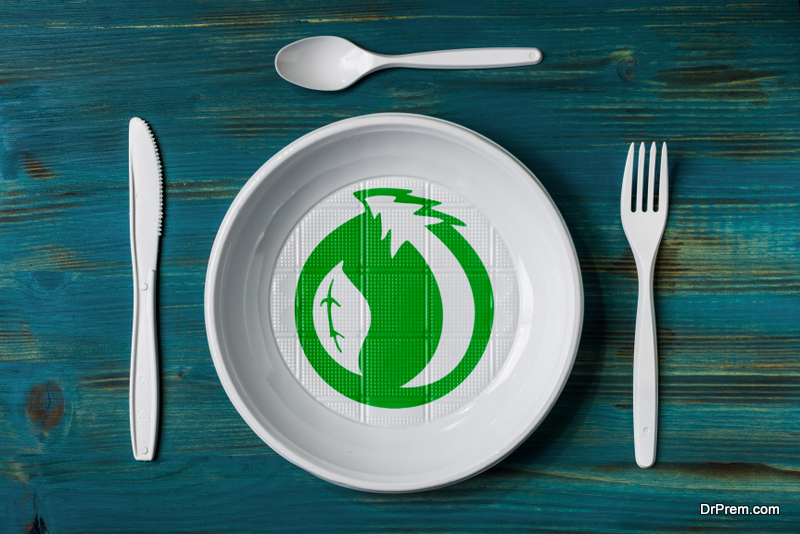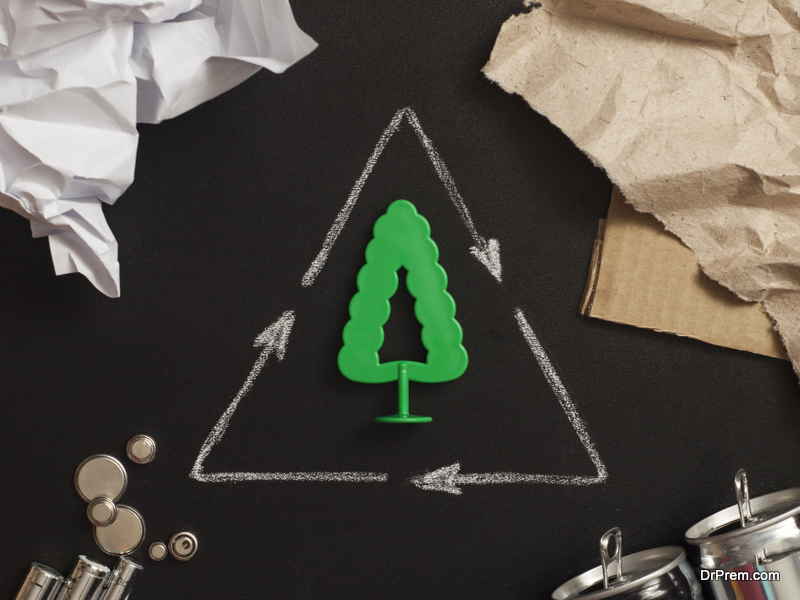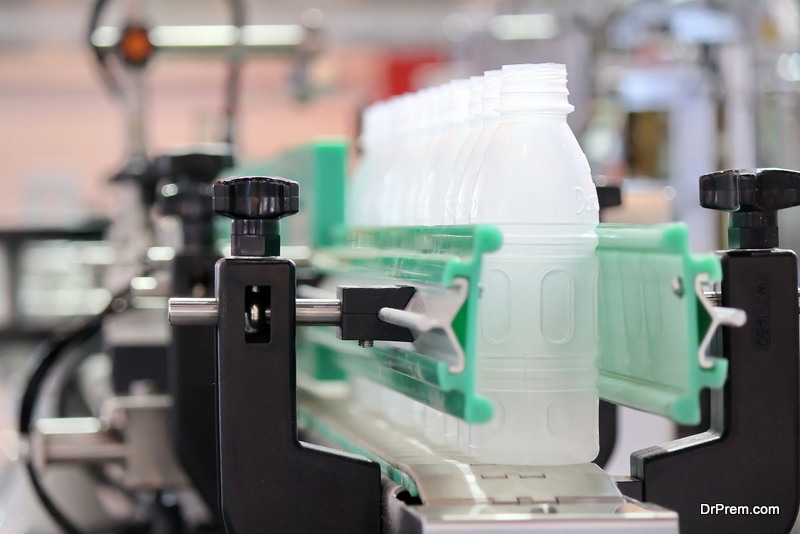Recently, there has been much debate about biodegradable plastics. Like every debate, there are also two sides to this debate. The first side is of those people who think that biodegradable plastics can solve the problem created by plastic. The other side is of the opinion that biodegradable plastics are not only not eco-friendly, they are in fact more damaging than even the ordinary plastic. However, there’s one thing that both these groups would agree upon. We need to stop manufacturing plastics, and look for some alternative materials that would help us in getting rid of it.
In the form of microplastics, we are discovering one more gigantic fact of the problem. It needs an immediate solution.
The good, the bad and the ugly about biodegradable plastics
Various chemically composed materials are affecting our environment in many ways every single day. The biggest reason behind is the non-biodegradable properties of these materials. One such product that does not decompose easily is PLASTIC. Plastic products not only pose a threat to the environment. However, it even is dangerous to all forms of life including human and animal life. Even today, the environmental impact of plastic is very scary. Thankfully, there is an alternative solution- BIODEGRADABLE PLASTIC. Through this article, you will get to know all the necessary information about biodegradable plastics.
So what makes biodegradable plastic an eco-friendly alternative?
Given the fact that biodegradable plastic has a better and convenient decomposition process, it can easily decompose under aerobic and anaerobic conditions. The process of decomposition with such materials involves the conversion of the microorganisms to complex molecular structures.
This helps to make such materials into a simple humus type residue; finally, it them converts into a less detrimental substance. Another interesting aspect about biodegradable plastics is that the bio active compounds helps to reduce the damaging effects of such plastic on the environment. There are two different ways that we can use biodegradable plastic
- The first is for the production of disposable cutlery – example: plates, cups, spoons, containers etc.
- The second is in the form of films or collections bags – example: to cover organic fruits etc.
In order to have complete awareness regarding the pros and cons of biodegradable plastics, let’s go through some essential points about the good, the bad and the ugly about biodegradable plastics.
The GOOD about biodegradable plastics
 If you are looking at an alternate way to reduce the harmful effects of plastic on the environment; then biodegradable plastic is the right choice for you. It helps to reduce the pollution levels caused due to regular plastic because of its eco-friendly nature. These sorts of plastics are made from biomass substances such as potatoes, corn and other such starchy products. Another aspect about biodegradable plastics is the requirement of three basic things
If you are looking at an alternate way to reduce the harmful effects of plastic on the environment; then biodegradable plastic is the right choice for you. It helps to reduce the pollution levels caused due to regular plastic because of its eco-friendly nature. These sorts of plastics are made from biomass substances such as potatoes, corn and other such starchy products. Another aspect about biodegradable plastics is the requirement of three basic things
- Proper heat
- Proper airflow
- The availability of water
The above three factors boost the advantages of biodegradable plastics during the decomposition process. Further on, it also helps to reduce the time of decomposition in comparison to regular plastic.
Can this be better?
The biggest factor about biodegradable plastics is that it is better for industrial use. This is because of the non-functionality in anaerobic conditions. No doubt, we can enhance the advantages of biodegradable plastics by working on the properties for personal use; but it will take a lot of efforts on this front.
Even researchers are constantly working out ways to make biodegradable plastic better so that it becomes multi-usable. In order to do so, they are finding out the different methods to help in strengthening the properties of biodegradable plastic. To achieve this, they are using the powerful ultrasonic ways to strengthen the plastic with nanoclays. Through this process the advantages of biodegradable plastics becomes more prominent making it multi-purpose and advanced in many ways.
The bad about biodegradable plastics
The next thing we look at are the disadvantages of biodegradable plastics. Plastic in general is a threat to the environment and life forms. Every day, the landfills are filled with different types of plastic only because of the excessive use. Similarly, even the water bodies are equally in a bad position because of the pollution caused by plastic. Even if we talk about biodegradable plastics, the bottom line is that it is still a form of plastic.
Understanding the different types of plastics
 Before we go on with the disadvantages of biodegradable plastics, let us first look at the two different types of Biodegradable plastics
Before we go on with the disadvantages of biodegradable plastics, let us first look at the two different types of Biodegradable plastics
The oil based
During decomposition, oil based biodegradable plastic does release carbon in the form of carbon dioxide. This process can also result in the green house effect on/in the environment.
The starch based
The biggest drawback about biodegradable plastics made from starch is that requires excessive water usage during degradation. This is why; it is not that easy to recycle, hence causing the extreme wastage of food or raw materials
Can we avoid the disadvantages of biodegradable plastics?
The answer is a YES, but there are certain things that we would have to consider. As per the latest studies and research, there are indications that biodegradable plastic is not completely harmless to the environment. They also prove to be detrimental to lives.
The reason
 Many biodegradable plastics give rise to toxic residues and pollutants after the end of their decomposition. For example, Many industries tag biodegradable plastic with the GREEN color. However, the same products cause the production of toxic chemicals and pollutants. Therefore, only those biodegradable plastics are favorable that are available with compostable materials quality.
Many biodegradable plastics give rise to toxic residues and pollutants after the end of their decomposition. For example, Many industries tag biodegradable plastic with the GREEN color. However, the same products cause the production of toxic chemicals and pollutants. Therefore, only those biodegradable plastics are favorable that are available with compostable materials quality.
How can we work towards it?
Compostable plastics are only degraded into renewable and non-polluted sources of materials. For example – water, inorganic substances, biomass and carbon dioxide. One should avoid using OBD (Oxo biodegradable bags) plastic bags. This is because they also contain traces of iron, cobalt and manganese elements. This composition causes delay in decomposition in the environment. At the same time, starchy-based bio plastics should also be used to certain limit as they cannot be recycled.
The ugly part about biodegradable plastics
Now that we know about the Good and Bad of biodegradable plastic; the last thing is to learn about the ugly part of biodegradable plastics. The first thing that we have to understand is that Biodegradable plastic is not an option to run away from the hazards effects of plastic. Let us check out a few factors that determine why such plastic has an ugly side to it.
Firstly, Most of the time, there are many biodegradable products that are not recyclable. Due to this, it can result in the wastage of crops and food products to a large extent. Due to this, the prices on food products and food in general will increase easily.
Secondly, some special types of bio plastics such as OBD bags demand specific conditions for proper decomposition. They necessarily need the presence of oxygen and sunlight for decomposition. such biodegradable plastics are just not suitable for landfills as there is no sufficient availability of oxygen and sunlight. There is a risk of very slow decomposition process in climatic conditions like winters or extreme humid locations.
What do researchers have to say about biodegradable plastics on this front?
Researchers reported that even compost heap process is not favorable all the time because of the polyethylene content of the plastic. In addition, the manganese slows down or almost checks the decomposition mechanism. Additionally, some popular biodegradable plastics such as OBD bags may also contribute to pollution as the possibility of toxicity due to already contained elements of plastics such as cobalt or manganese. Even in the case of biodegradable plastic bags, you would need to consider different things before even buying one.
The challenges that lie in front of us
Usage of biodegradable plastics is actually very challenging and has become critical now. No matter, biodegradable plastics are far better than normal conventional plastics. Biodegradable plastics help to reduce the oil-dependent businesses by any nation, as plastic manufacturing processes highly demand the oil ingredient. However, the biodegradable plastics are only beneficial with some essential things associated with them.
For example, bioplastics like corn-based plastics are only degradable if provided with accurate composting facilities. Otherwise, it may take usual decomposition time as normal plastics. Above all, most of the biodegradable plastics are more suitable with aerobic decomposition process. Moreover, this particular condition may not be provided in places like landfills.
Why is the ugly part of biodegradable plastics so critical and important?
Every nation is trying to adopt eco friendly practices and sustainable alternatives for the betterment of lives. Biodegradable plastics are one of the essential steps towards achieving the ‘go green’ concept. Undoubtedly, biodegradable plastics are much safer than non-biodegradable products in terms of non-pollutant sources. This is all possible with biodegradable plastics due to combined contribution of some additives and oxygen/sunlight.
However, many advanced versions of biodegradable products are also launched like compostable plastics and bioplastics. The main highlight of compostable plastics is their non-toxic compositions like wood.
As a result, there are almost no chances of production of toxic chemicals. However, the supreme quality product is bioplastics so far. Its main advantage is its synthesis from all natural sources like starchy products, corn etc. The only attention is to run the sustainable farming processes in nation, in order to avoid any scarcity situation.
Final Words
As Dr Prem Jagyasi said in his book Carve Your Life: “Let go of that which is unnecessary to make space for that which is meaningful. This is the simplest way to begin a process that will change your life for good.” Right now the only way of limiting the problem is by using only the products we need and buying only that which is necessary. It is best not only for the environment but for us too. Had we adopted this solution a little earlier, we wouldn’t be facing this problem now.
Read More:



